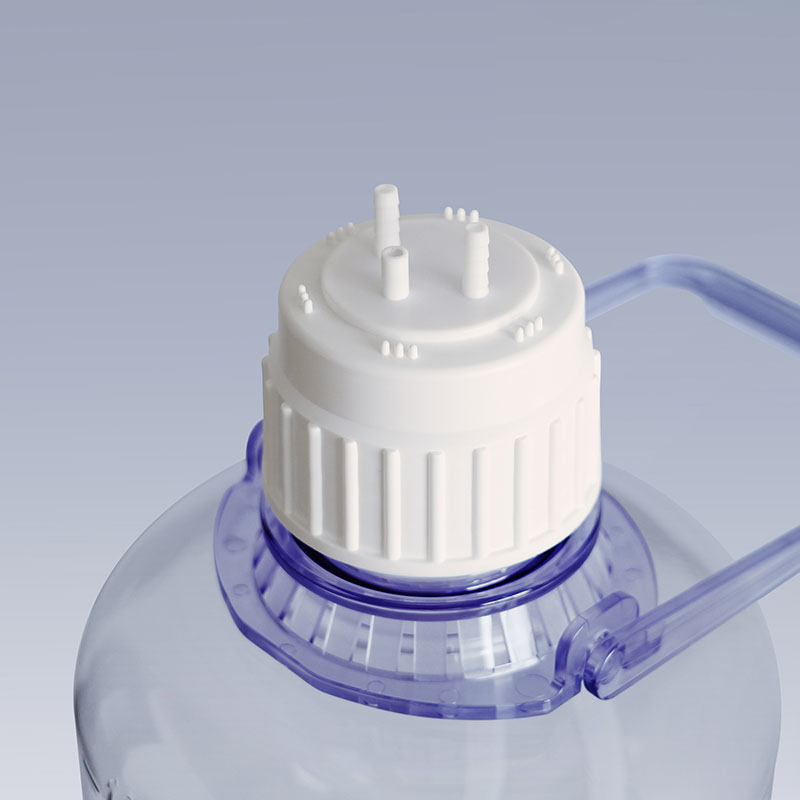Carboys are essential containers in modern laboratories and production facilities. Their design and material selection directly impact the safety and quality of stored liquids. This article explores the key design features and applications of carboys in scientific research and industrial production.
1. Advanced Materials and Manufacturing Process
The main materials used for carboys are polycarbonate (PC) and polypropylene (PP). These materials offer excellent temperature resistance and chemical stability, making them suitable for:
High-temperature autoclaving for sterilization
Low-temperature freezing for long-term storage
2. Advantages of One-Step Molding Process
Carboys are manufactured using an injection stretch blow molding (ISBM) process. This one-step molding technique ensures:
Seamless structure, eliminating joints and reducing leakage risks
Enhanced durability and aesthetic appeal

3. Multi-Functional Liquid Transfer and Sealing Caps
To accommodate different experimental and production needs, carboys are equipped with various liquid transfer and sealing caps. These specialized caps:
Ensure safe and hygienic liquid storage and dispensing
Facilitate easy liquid sampling and addition
4. User-Friendly Design for Convenience
Carboys are designed for easy handling and operation, featuring:
Ergonomic handles for effortless carrying and transportation
Standardized openings for compatibility with different carboy models
Graduated markings for precise liquid measurement and dispensing
Narrow-mouth design and high-transparency materials for easy monitoring of liquid status and changes
Conclusion
With their high-quality materials, precision manufacturing, and user-centric design, carboys provide a safe and efficient solution for liquid management in laboratories and industrial production. Their superior performance ensures liquid stability and quality while enhancing operational efficiency, making them indispensable in modern scientific research and manufacturing.
The FAI climbed 5.9 percent year-on-year in the first 11 months of 2018, quickening from the 5.7-percent growth in Jan-Oct, the National Bureau of Statistics (NBS) said Friday in an online statement.
The key indicator of investment, dubbed a major growth driver, hit the bottom in August and has since started to rebound steadily.
In the face of emerging economic challenges home and abroad, China has stepped up efforts to stabilize investment, in particular rolling out measures to motivate private investors and channel funds into infrastructure.
Friday's data showed private investment, accounting for more than 60 percent of the total FAI, expanded by a brisk 8.7 percent.
NBS spokesperson Mao Shengyong said funds into weak economic links registered rapid increases as investment in environmental protection and agriculture jumped 42 percent and 12.5 percent respectively, much faster than the average.
In breakdown, investment in high-tech and equipment manufacturing remained vigorous with 16.1-percent and 11.6-percent increases respectively in the first 11 months. Infrastructure investment gained 3.7 percent, staying flat. Investment in property development rose 9.7 percent, also unchanged.
 English
English


















































